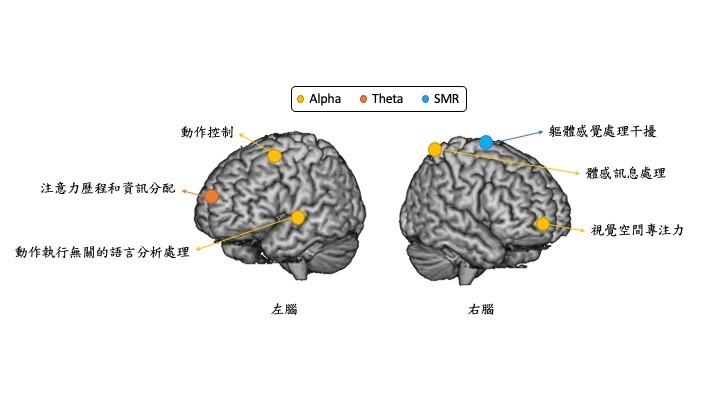ORIGINAL ARTICLE:本校公共事務中心 (2022-10-17)
(English Version Powered by ChatGPT, Edited by Serena H.)
This report is provided by the Department of Physical Education and Sport Sciences, Doctoral Candidate Chang Chih-Yen’s Research Team
The outstanding performance of competitive athletes is closely related to brain mechanisms, and the research field exploring the human body’s maximum potential of performance and recovery using brain measurement tools is called “sport cognitive neuroscience.” This field is based on psychophysiology, combines sports psychology theories, and applies neuroscience techniques, evolving into a unique research domain. Its research focus is on the relationship between brain processing mechanisms of athletes and their performance. The main measurement tools used in this field are EEG (electroencephalography) and fMRI (functional magnetic resonance imaging).
This study starts from the historical context of sport cognitive neuroscience, focusing on domestic scholars’ research, and combining international studies for discussion. The goal is to provide domestic scholars with reference suggestions for future research design.
As international sports events have gained increasing attention, more people are focusing on athletic performance, and some researchers have shown interests in the exceptional motor performance displayed by elite athletes. This has led to the emergence of the research field of “sport cognitive neuroscience” to explore the maximum capacity of the human brain.
Most scientific studies related to competitive sports aim to enhance the performance of athletes. Sport cognitive neuroscience is no exception. Early studies in this field began by investigating the relationship between brain activity and sports performance, aiming to understand the neural mechanisms involved. Later, methods such as psychological skills training and neurofeedback training were introduced to enhance specific brain indicators and improve athletic performance.
Each brain area is responsible for different functions, so, which areas of the brain are closely related to sports performance? Brainwaves can record the brain states of athletes during the action preparation period, helping to assess brain indicators that may be related to sports performance. The results of related studies are summarized as follows:
- Left motor cortex alpha power: related to movement control.
- Right prefrontal cortex alpha power: related to visual spatial attention.
- Left temporal lobe alpha power: related to language analysis unrelated to movement execution.
- Parietal cortex alpha power: related to somatosensory information processing.
- Frontal midline theta power: related to attention processes and information distribution.
- Sensory-motor rhythm (SMR): related to interference in body sensory processing.
Improvement in motor skills often accompanies changes in brain structure and function. Using fMRI as a research tool helps to understand how brain structure and function change. Key findings from related research are summarized as follows:
As athletes gain more training experience, the gray matter in brain regions related to motor actions increases, enhancing the activity efficiency in those regions, especially in the motor assistance areas. This change is known as “neuroplasticity.” Neuroplasticity induced by sports experience may occur in a non-linear way.
The accumulation of sports experience also leads to changes in the communication and connections between different brain areas. These changes are commonly observed in brain networks like the Default Mode Network (DMN), Sensorimotor Network, and Frontoparietal Network. However, the research results vary across different types of sports.
The relationship between competitive sports performance and brainwave frequency is very strong, especially for precision sports. Observing brainwave frequency changes during the action preparation period seems to correlate with performance outcomes. Additionally, fMRI research generally supports the idea that sports experts are more efficient in motor-related brain areas, though results may vary across different types of sports. Future research is needed to explore these differences further.
Source: https://doi.org/10.6129/CJP.202006_62(2).0007
Article Source: Research Highlights, Research and Development Office
Original Link: https://rh.acad.ntnu.edu.tw/tw/article/content/174
Chang Chih-Yen, Doctoral Candidate | Department of Physical Education and Sport Sciences
Currently enrolled in the Ph.D. program at the Department of Physical Education and Sport Sciences, National Taiwan Normal University, under the guidance of Professor Hong Chong-Min. Research interests include sport cognitive neuroscience.

圖一:運動表現相關的大腦指標